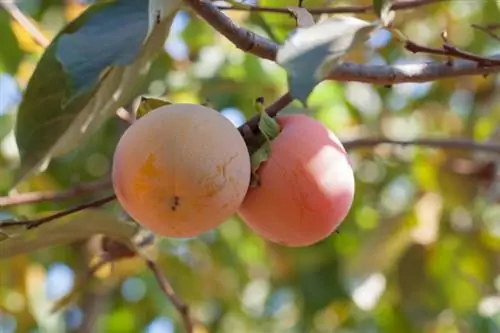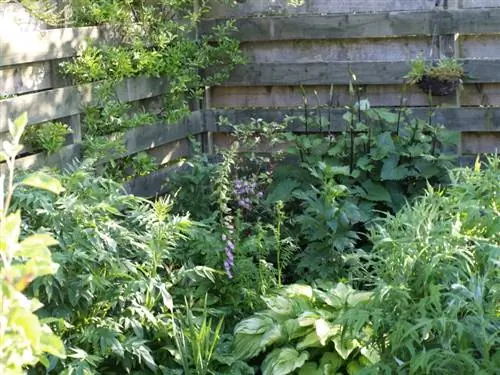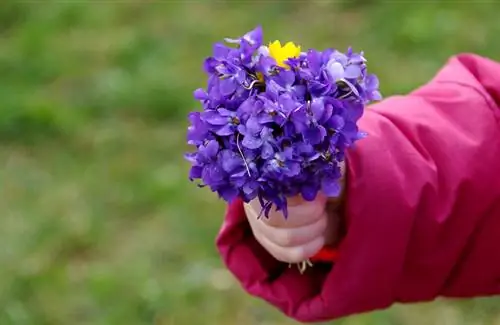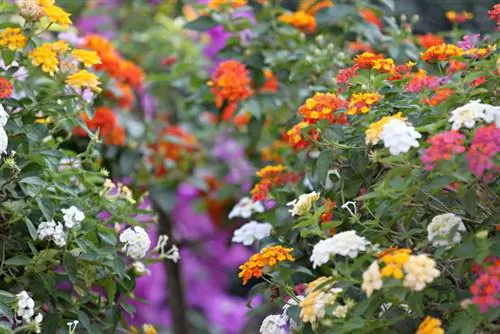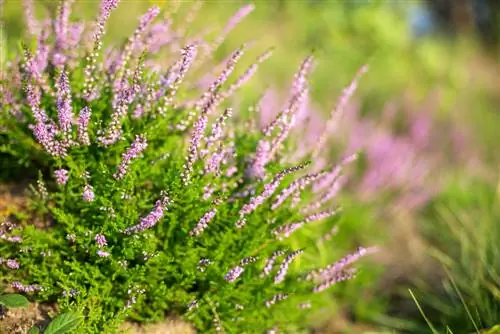- Author admin [email protected].
- Public 2023-12-16 16:46.
- Last modified 2025-01-23 11:22.
Rhododendrons and azaleas are often confused with each other because of their similarity. But there are crucial differences. You can find out how you can tell them apart safely and what you should pay attention to when caring for them in this article.
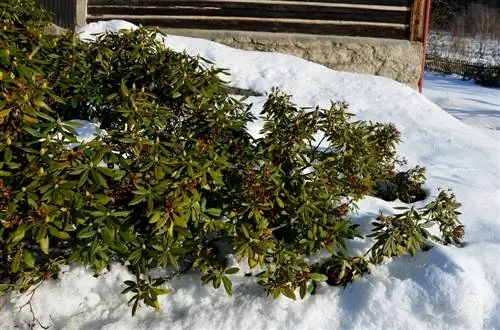
What is the difference between azaleas and rhododendrons?
Azaleas and rhododendrons differ primarily in their foliage: Garden azaleas are deciduous and lose their leaves in autumn, while rhododendrons are evergreen. In addition, azaleas have more delicate growth and smaller flowers, while rhododendrons grow more compactly and have larger flowers.
What similarities do azaleas and rhododendrons have?
Azaleas belong to the rhododendron family and not only have visual similarities, but also care-related ones. The following compares rhododendron and garden azalea:
- The two deciduous trees impress with their rich, colorful flowers. They are often found in gardens and on balconies.
- Both are relatively easy to care for and not demanding.
- For numerous flowers, they prefer acidic, loose and moist soil.
- They should be in partial shade.
- Both are relatively disease resistant.
- As extremely exotic species, they originate in Asia and North America, depending on the species.
- They are both poisonous.
How to distinguish between azaleas and rhododendrons?
These characteristics fundamentally distinguish azaleas and rhododendrons:
- Unlike rhododendrons, most hardy garden azaleas are summer green. This means that they shed their leaves in autumn and thus protect themselves from frost. Rhododendrons are evergreen and therefore somewhat more sensitive to frost. Rhododendrons and their leaves are also suitable as privacy screens in winter.
- Garden azaleas are more delicate in their growth, rhododendrons are more compact.
- Most garden azaleas have smaller flowers than rhododendrons.
- Certain types of azaleas are suitable as houseplants, but not rhododendrons.
Do azaleas and rhododendrons have different care requirements?
Since azaleas and rhododendrons are closely related, they also have similar care requirements. First of all, the location should bepartially shaded without direct sunlight. Rhododendrons in particular get sunburnt very quickly in the intense midday heat. In addition, thesoil should be acidic. An optimal pH value is between four and five. Furthermore, you should ideallywater the plants with rainwateras they are sensitive to lime. AvoidBe sure toWaterlogging Both species tolerate this poorly and react with root rot.
How are azaleas and rhododendrons blended correctly?
During the flowering period, both the azalea and the rhdodendronwilted flowers should be carefully broken out by hand. This promotes further flower formation. In principle, both species do not require any pruning. However, if you want to trim them in terms of height and growth habit, you should do thisin March. Remove all dead, dry, inwardly branching and crossing branches. When cutting,one leaf should be left standing The new shoot forms at the base of the left standing leaf.
Tip
Azaleas and rhododendrons also have similar requirements when it comes to soil and additional fertilizer
If you want to plant or repot your azalea, you can use special rhododendron soil (€20.00 on Amazon). This has exactly the right acidic pH value and is slightly permeable so that the plant is better protected from waterlogging. When it comes to fertilizer, you can also use special rhododendron fertilizer for azaleas. This also has the right nutrient ratio for rhododendrons and azaleas.


